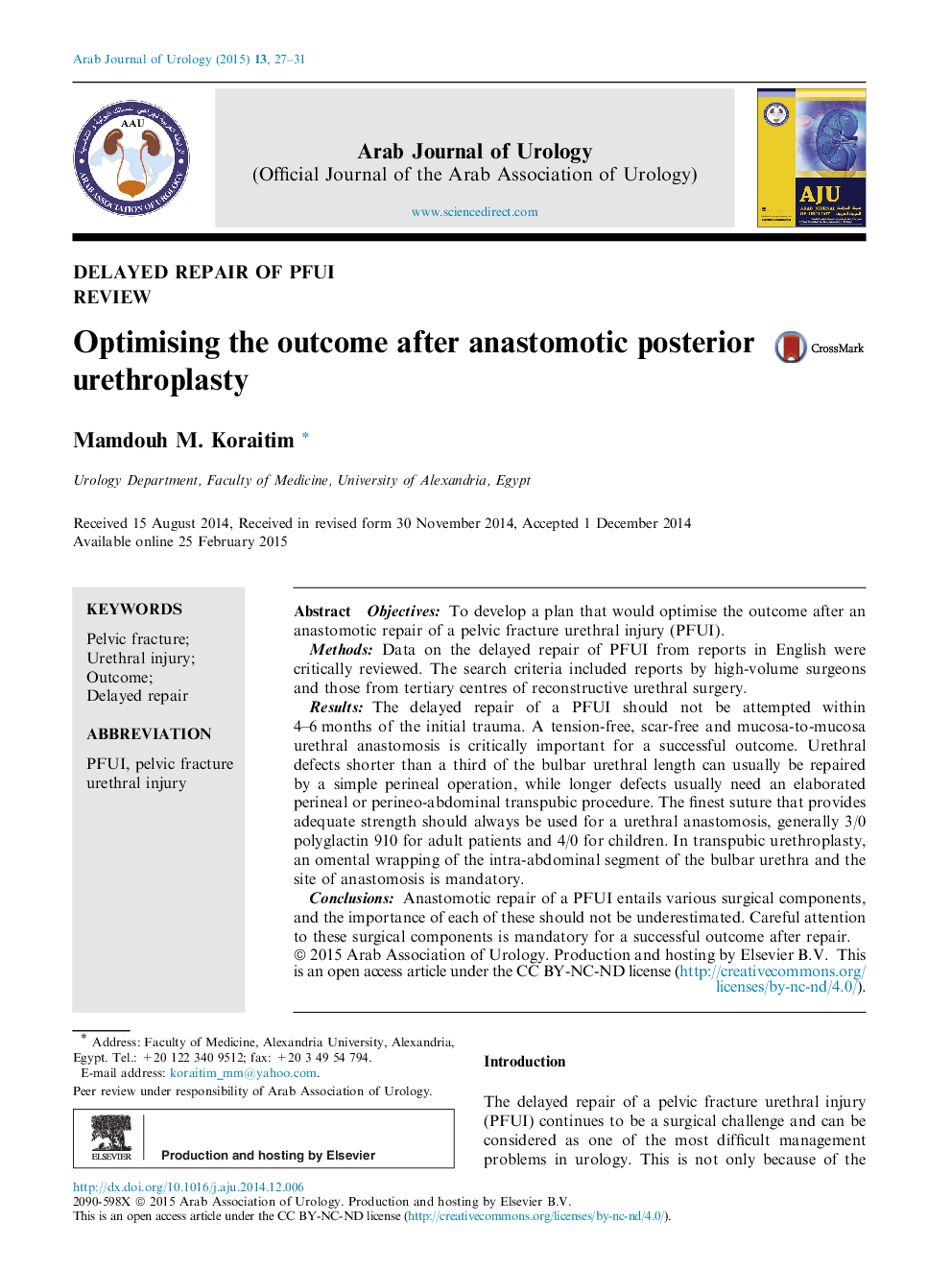| Article ID | Journal | Published Year | Pages | File Type |
|---|---|---|---|---|
| 4267960 | Arab Journal of Urology | 2015 | 5 Pages |
ObjectivesTo develop a plan that would optimise the outcome after an anastomotic repair of a pelvic fracture urethral injury (PFUI).MethodsData on the delayed repair of PFUI from reports in English were critically reviewed. The search criteria included reports by high-volume surgeons and those from tertiary centres of reconstructive urethral surgery.ResultsThe delayed repair of a PFUI should not be attempted within 4–6 months of the initial trauma. A tension-free, scar-free and mucosa-to-mucosa urethral anastomosis is critically important for a successful outcome. Urethral defects shorter than a third of the bulbar urethral length can usually be repaired by a simple perineal operation, while longer defects usually need an elaborated perineal or perineo-abdominal transpubic procedure. The finest suture that provides adequate strength should always be used for a urethral anastomosis, generally 3/0 polyglactin 910 for adult patients and 4/0 for children. In transpubic urethroplasty, an omental wrapping of the intra-abdominal segment of the bulbar urethra and the site of anastomosis is mandatory.ConclusionsAnastomotic repair of a PFUI entails various surgical components, and the importance of each of these should not be underestimated. Careful attention to these surgical components is mandatory for a successful outcome after repair.
